“Levelling up and being able to create those opportunities for yourself is, I think, one of the best parts of this fishery.” — Stevie Dennis
How can economic opportunity, cultural heritage, and environmental stewardship work together? For Stevie Dennis, the answer is in the ocean.
As the founder and owner of NAAS Foods, Stevie operates British Columbia’s largest single-tenure kelp farm, which is helping to reshape the local seafood industry while strengthening Indigenous rights. His aquaculture farm is part of an Indigenous fishery led by the chiefs of five Vancouver Island nations, supported by a Supreme Court decision that recognized Indigenous rights to fish and harvest traditional foods.
Through NAAS Foods, Stevie sells kelp-based products, packages seafood for sport fishers, and supplies local restaurants with sustainably sourced seafood. His work continues a legacy of food gathering that has sustained Indigenous communities for millennia. “It comes naturally for people to work with seafood,” he explains. “That’s what our people have done for so long.”
A passionate entrepreneur, Stevie believes in using business as a force for good. He sees entrepreneurship as a way to create lasting impact by uplifting local communities, strengthening Indigenous food security, and building economic opportunities. By blending tradition with innovation, he is proving that Indigenous entrepreneurship is not just about reclaiming space in established industries, but about shaping the future on stronger, more equitable terms that aren’t all focused on extraction. “We all want to be able to live here and do what we want to do,” he says.
You’ll also learn:
- How the sea shapes the lifestyle and culture of Tofino.
- The power of Indigenous economic opportunities.
- Why connecting economic growth to cultural heritage matters.
- The untapped potential of kelp for food, fuel, and sustainability.
- The challenges tourism brings as Tofino’s primary industry.
- How interconnectedness offers a framework for building a better future.
Subscribe to Travel Beyond through Apple Podcasts, Spotify, or your favourite podcast player.
Show notes
NAAS Foods — An Indigenous-led company that produces premium, organic, and vegan-friendly kelp products, hand-harvested from the Clayoquot Sound.
Tourism Tofino — Tofino’s official not-for-profit destination marketing and management organization.
Episode transcript
This transcript was generated using AI and has been lightly reviewed for accuracy.
Stevie Dennis: We work with the local wild fishery, so buying off of cousins and uncles and relatives. Watching this economic growth within the community right before our eyes. Leveling up and being able to create those opportunities for yourself is, I think, one of the best parts of this fishery. You know, it gives people the pride in what they do. It lets them take it back, let’s say.
David Archer: Welcome to Travel Beyond. I’m David Archer from Destination Think, recording from Haida Gwaii, the territory of the Haida Nation off the north coast of British Columbia in Canada. On this show, we look at travel’s role in making a better world and we highlight leading destinations and changemakers. Our guests are taking local action that the world can learn from, they’re helping to regenerate ecosystems, communities, and economies, and they’re often making positive change happen from the bottom up.
Many of the voices we’ve highlighted are part of the Destination Think Collective, which is a peer group of ambitious forward thinking destinations working toward a better future for travel and the planet. Members represent places like Banff and Lake Louise in Canada, Seattle in the U. S., Copenhagen in Denmark, Queenstown Lakes in Aotearoa, New Zealand, and many more.
Today, I have a set of bite sized innovations to share, and this time I literally mean bite sized because we are talking about seafood. Today’s guest is entrepreneur Stevie Dennis, the owner and operator of NAAS Foods, located in the Tofino Harbour. Stevie runs BC’s largest single tenure kelp farm, and aquaculture is a fast growing industry these days.
As I learned in this conversation, kelp is an incredibly useful crop, ranging from uses in food, to biofuels, to carbon sequestration, and Stevie even told me off mic that someone is trying to make acoustic paneling out of kelp, so I’m saving that idea for a future sound studio. He also told me how the business is helping to lift up his community economically, whether through employment or as a model to inspire others.
Stevie is an Ahousaht member of the Keltsmaht First Nation, and he harvests seafood as part of the T’aaq-wiihak fisheries, which belong to the five Nuu chah nulth nations of central Vancouver Island, and those include the nations that surround Tofino. The word T’aaq-wiihak refers to fishing with the permission of the Ha’wiih, or hereditary chiefs. And that question of authority is the critical piece, because fishing is highly regulated by the Canadian government. There’s a lot of legal backstory to this at provincial and federal levels, but what’s important to know is that the Five Nations are catching and selling all species traditionally harvested within their territories, and Indigenous led harvesting is critically important to the economies and communities of those nations.
The Aboriginal rights to this harvesting were first recognized by the Supreme Court in 2009. Which kicked off the events that led to today’s fisheries. Thanks in part to the T’aaq-wiihak fisheries, Stevie’s business is making a difference in the tourism industry too. And NAAS Foods provides sustainably harvested seafood that might end up on your plate when you visit.
We’re going to learn all about it in just a moment, but first here’s Brad Parsell with a word from Tourism Tofino.
Brad Parsell: Hi, I’m Brad Parsell, executive director at Tourism Tofino. We are a proud sponsor of this second season of Travel Beyond based in Tofino. It’s been so great listening to all of these inspiring stories, uh, locally and putting them out there around the world.
And I’m really excited about today’s episode. I’m so glad we could have Stevie Dennis on. He’s been doing, uh, so much inspiring work as an entrepreneur. And, uh, we so appreciate having NAAS Foods in the community. Um, you’re going to hear all about them in just a second, um, but at Tourism Tofino, we certainly recognize the amazing contributions and creativity of the many business owners who are making a difference, both for visitors and residents, while also taking care of the environment and giving back to the community.
Um, and I think that’s a big reason why this NAAS Food story from Stevie is so important. Tourism has provided many folks in Tofino with economic opportunities, but it’s beyond time that that was extended to the First Nations in the area. And we have really reached a tipping point of local Indigenous owned businesses in Tofino in the last few years.
In fact, according to Indigenous Tourism BC, we actually have more market ready Indigenous tourism businesses in Tofino than in downtown Vancouver now. So there you go. Um, so very excited for this episode with Stevie and NAAS Foods. Thank you so much for listening to Travel Beyond. This is from Destination Think, and Destination Think has a collective of destinations working behind the scenes of which Tofino is a part.
A group of ambitious destinations that care about the future of travel and the planet. And as a part of that group, I’ve been able to learn so much about the creativity of entrepreneurs and other leading destinations. And here’s one from Tofino. So thanks so much for listening and enjoy the show this week.
David Archer: Thanks Brad. And now here’s my conversation with Stevie Dennis at NAAS Foods in Tofino.
Stevie Dennis: So my name is Stevie Dennis and I am the owner and operator of NAAS Foods.
David Archer: Great. And, uh, yeah, tell us where we’re sitting right now.
Stevie Dennis: So, we are inside NAAS Foods right now, here in Tofino, British Columbia.
David Archer: And, uh, can you tell me a little bit about your connection to this area?
Stevie Dennis: So, a little bit of who I am, uh, yeah, let’s start with my parents, my grandparents.
So, on my mother’s side, my grandfather and my grandmother come from Ahousaht. As well as my mom. I’m on my father’s side. They are from California. His grandparents and, or my grandparents were from California, moved up here during the Vietnam War to a place called Hippie Point, which is halfway between here and Ahousaht.
And so my dad grew up in the bush and then met my mom in a Ahousaht because it was closer to go to a Ahousaht than it was to go to Tofino and go hang out up there and the rest is history. Um, and so my parents had a couple businesses growing up, uh, here in Tofino, uh, had a whale watching company and a hotel.
And so I grew up just doing this.
David Archer: For our listeners who aren’t familiar with this area, tell us a few things that you love about living here.
Stevie Dennis: Oh, uh, there’s so much that you can love. That’s the hardest part. When people talk about lifestyle and livelihoods, and you know, it just feels normal. I can’t leave Tofino for more than like a week.
You know, you start getting stressed out. I can’t leave the ocean for more than a few days. Yeah. You know, if you go, if I go inland, it gets challenging. You’re like, I gotta get back to the water. There’s just so much, uh, family, the culture, the people, the community, the beaches, the waves, the fishing, the hiking, the rivers, you know, all of it is part of it.
I’ve been cruising the coastline here my whole life. I bought my first boat when I was 15. There’s still more to see.
David Archer: What was that like having a, a boat at age 15? What was your, what was your time like on the water?
Stevie Dennis: A lot of learning. Um, you know, mistakes happen. I was taught from a young age, some of the best ways to learn is pain and money.
Okay. You know, if you burn your hand on a wood stove, you’re probably not going to touch it again. Right. If you, uh, accidentally have to spend 10, 000, you’re not going to do that again. It was a great time. It was actually really fun. That first boat I had was a really, really enjoyable time. I bought it with a buddy that still lives here in town. It was awesome.
David Archer: So, so the water is a big part of your life. I’d like to talk a bit about this business, NAAS Foods. Yeah, tell me about how that started.
Stevie Dennis: So, NAAS Foods was founded in 2021, uh, with a previous business partner who’s no longer here. We set out our goals to work with seaweed and kelp. Of course, it’s only natural when you work with, with kelp.
It’s all, it’s all seafood. We just started working with fish as well. It’s, it’s second nature. A big portion of what we do is sport fish processing. So if you come to Tofino and you want to go on a fishing charter, and you don’t know what to do with all your fish that you catch, because the waters here are very bountiful.
Come see us. We’ll process it down. We’ll vacuum pack it. We’ll flash freeze it. You could get a cooler from us. We could ship it to you anywhere in North America. And then people get to have the story and take their food home with them. So that’s one aspect of the business. Uh, the other aspect is working with the T’aaq-wiihak fishery.
Uh, so supporting the local indigenous fishery. We don’t work with farm salmon here. Um, we work with the local wild fishery. Uh, so buying off of cousins and uncles and relatives. Um, watching this economic growth within the community. Right before our eyes. Yeah, you know people go from having, you know, tiny little speedboat to all of a sudden having trollers and this this fishery is growing out here on the coast.
We’ve moved away from the armchair fisherman from one guy who owns, you know, half of all the quota in British Columbia to the only way you can participate in this fishery is you have to be from one of the five nations. Which is the Tla-o-qui-aht, Ahousaht, Hesquiaht, Mowachaht/Muchalaht, and Ehattesaht Nation.
Um, that’s ranging from right where we are right now, all the way up to the north end of Nootka Island there. You, so in order to participate, you have to be the captain. You can’t just get the quota and then let somebody else fish it.
David Archer: So you’ve gotta, you’ve gotta participate yourself in the actual harvesting.
Stevie Dennis: Exactly. Which, which means The harder these fishermen fish, the more economic growth they’re going to see. So, all of a sudden, people are going on vacations, they’re buying new cars, they’re putting, getting their kids new clothes, you know. It’s, it’s this growth that has been happening within the community for the last, I think, 18 years now.
David Archer: That’s how long the fishery has been operating?
Stevie Dennis: Yeah, for the first 8 years, the um, The five nations had challenged the DFO for the rights to catch and sell fish and DFO said no, that’s not right and the nations said well it is and the Supreme Court ruled in favor of the nations. So they had a, uh, you know, it’s a preliminary fishery, um, a test fishery and that went on for eight years until another decision was made.
And then it was appealed again. And just recently, I believe, three or four years ago, was the final decision where the Supreme Court told DFO that they have to play fairly and equitably with the five nations. So that meaning more access to quota, um, more access to different quotas, uh, having more, um, power over the traditional territories, and it’s, it’s just been wonderful, man.
Like, watching these nations grow, watching these people grow, watching the youth get involved, um, and, and it ranges from everything, man. You could be, like, let’s take me, for example. I do gooseneck, crab, salmon, and lingcod. You know, there’s other fishermen who do prawn, other fishermen who do black cod, other fishermen who only do salmon, some do halibut, and some of these guys have gone from having a small tiny boat, just like myself, to now I had just purchased my newest boat, which went, I went from a 21 foot to a 34 foot boat.
David Archer: Wow, congratulations.
Stevie Dennis: Yeah, it’s uh, so, you know, leveling up and being able to create. Those opportunities for yourself is I think one of the best parts of this fishery. You know, it gives people the pride in what they do, you know, it lets them take it back. Let’s say so. Yeah, and they’re leading the way setting precedents for a lot of neighboring nations and other nations.
David Archer: Is this something that can be replicated elsewhere because it’s an issue across Canada like on the East Coast and the West Coast and everywhere.
Stevie Dennis: Yeah, it’s wild.
So the opportunity, I would say, it just, um, it comes down to the nation and the people themselves. How badly do they want it? You know, what do they want to see in their nation? And of course, these nations that can be very isolated, that creates work and opportunity for them. Yeah, absolutely. Livelihoods, right there.
David Archer: Yeah, you mentioned youth being involved as well. Yeah. Tell me a bit about that.
Stevie Dennis: If you’re, if you’re, let’s say if you’re a youth, you’re a niece, a nephew, whatever, hop on a boat. Somebody’s always happy to take you out. I am always more than happy to take out my uh, I would say my children when they’re older, uh, but my nieces and nephews.
My, my nephew actually has been working for me for the last three years, and it’s been amazing to watch him become the young man that he is. You know, you’re bringing your community into it. Yeah, well, so we’re buying local fish through the indigenous fishery, providing the support, and if I have the market, I will buy the fish at a premium price.
You know, let’s say if it’s five, if I can turn around and this fish looks nice, I’ll buy it at eight bucks a pound. So that’s one aspect supporting the communities here through employment. Like I said, it’s, it comes naturally for people to work with seafood. You know, that’s what our people have done for so long.
Let’s say you have a choice. You could go work at, as a server, you could go work at the fish farms. You could work as a surf instructor or a cook, or you work with fish. The fishing industry is something that I think has had its ups and downs in the last 50 years. Um, but with this T’aaq-wiihak fishery, it’s on the up.
David Archer: That’s wonderful to hear. So kelp, why is kelp such an important crop for you?
Stevie Dennis: So the kelp, algae, seaweed, whichever way you want to call it, Um, is I believe we’ll be the next, the next sector. Um, there’s a lot of push from the government, from the communities, uh, from small businesses to grow this kelp and get the infrastructure and the supply there for the demand.
David Archer: Why is there so much demand?
Stevie Dennis: It’s, well, it’s, um, just like in the prairies. It’s, it’s another plant that you can grow. One for food, one for agriculture purposes, one for, um, you know, we go down the R& D side, you can do fuel, you can do, uh, bioplastics, carbon sequestering. A lot of these ways that, uh, kelp can be used.
In my line of work, it’s just starting, so we’ve been producing kelp products, which would be, these guys right here. Um, we have a dried kelp, you can open that up, and we have a smoked kelp. These guys are food products that we make right here in house. They are delicious, they are amazing, yeah. It’s wild how good it turned out.
So these are some of the products that we’re going to be bringing to the market. Smell that one. That one’s going to smell really good. Smoked kelp flakes.
David Archer: Wow. I’m making a mess.
Stevie Dennis: That’s okay.
David Archer: Wow, that’s awesome. Yeah, so so the kelp is becoming everything from like popcorn seasoning to carbon sequestration like
Stevie Dennis: Exactly the and it’s and it’s brand new here in North America.
It’s been very predominant in the Asian market, um, where a lot of the kelp that’s produced globally goes there, as you know it, food security is one of the biggest pushes on everybody’s plates right now. It’s big. Yeah. Um, so creating products locally, being able to distribute, distribute them locally, creating the jobs locally, keeping the manufacturing locally, keeping all of these things here ticks, every single box.
Tell me about the kelp farm itself. So how, how big is it? Where is it located? So, uh, my kelp farm is located in Ritchie Bay, uh, within the Hauzat Hauhautli, uh, just on the other side of the Lone Cone, right over there. It is 400 meters by a thousand meters, which makes it the largest single tenure site for kelp aquaculture in British Columbia.
David Archer: Incredible.
Stevie Dennis: The farm has been approved for one year so far. And, uh, the infrastructure is going in for a 20 25, 25 percent production. That’s the goal. And that infrastructure is going in literally as we speak. Right after this interview, I have a meeting with the, with the local company that does all the mooring blocks and everything.
David Archer: Great. What does 25 percent production mean?
Stevie Dennis: Yeah, that’s, and that’s the question that everybody’s been asking. Is what does what does this kelp look like growing on scale in a farm? Nobody’s done it en masse like this before. Okay. So, figuring out the best farming methods, seeding methods, harvesting methods, what a facility you’re going to need for processing methods, packaging distribution.
There’s like, there’s a lot of things that go along with this on the safe side. Let’s say it could be as low as 70 tons. Or as high as 250 tons annually. Harvested kelp. Yeah. And, and the other side too is with the kelp that we would be harvesting, we can now use the whole plant. So previously, the stuff you just looked at, that’s all sustainably hand harvested, where we’re only cutting the blades of the plant 12 inches up from the bulb, from the stipe.
It’s essentially like pruning the leaf off, the plant keeps growing. And bull kelp being able to grow up to 10 centimeters a day, You cut one plant, you could come back a month later and probably not even know the difference. So all of the products that we’ve made so far for human consumption are made out of the blades through wild harvesting where we had to do surveys to be able to get the allocation.
You have to have support from the nation, you know, and we try to keep everything in house. We don’t make the glass, obviously. Right. Yeah. But hey, what if you start making the packaging out of kelp?
David Archer: Yeah. Wow. So, okay. So you’re harvesting kelp. It seems like, you know, and you mentioned wild harvesting. What does, what does that mean?
And is it related to, you know, restoring nature or sustainability?
Stevie Dennis: So, Clayoquot Sound, we are very fortunate that, and my views did change on it. I know views change from nation to nation, but sea otters have always been a bit of a pest. For the indigenous people up and down the coast. Sea otters were reintroduced, and don’t quote me on this, uh, I believe it was 1998 in Clayoquot.
And they brought either 98 or 198 sea otters from Alaska. That’s recent. Yeah. And that’s why I say don’t quote me on it, you’ll have to research it. But the population has grown so large that now we have this high influx of sea otters. And sea otters eat a lot of shellfish. They eat up to 40 50 percent of their body weight a day.
And one of their favorite foods being the sea urchin. Sea urchins eat kelp. So imagine if you have these vast biomasses of sea urchin. They’re going to eat all the kelp. They’re going to clear cut the entire coastline. And that’s what a lot of these places have had happen. You have too many sea urchins, which are just destroying the kelp beds in the kelp forest.
The kelp forests are the same as this forest here. You know, they provide safety and refuge and homes for all the wildlife. Nurseries, places for the fish to spawn, you know, all of that. And if you don’t have the kelp forest It’s, it’s just going to hurt the, the wild fish population.
David Archer: And the sea otters are keeping the urchins in check or?
Stevie Dennis: Exactly. Right, okay. So, Clayoquot Sound, in the last, I don’t even know, there was a survey done in 2006 for a kelp survey. And then in order to get the wild harvest, we did a survey in 2020, I think, or 2021, I can’t remember. Um, and the numbers are way higher, you know, it’s just, there’s sea otters everywhere.
You go down to First Street Dock, I bet you can see the local sea otter. It’s right here in the harbor.
David Archer: How do you think your fishing mindset is different as a Ahousaht fisher compared to someone from somewhere else? Or that makes it different from some of the challenges that you’re seeing in other places?
Stevie Dennis: I, you know, it’s hard to say because it’s like people say, you know, there’s something in the water or it’s, you know, I don’t know, man, but I believe it’s just a matter of being out here.
It takes the one person to show a different path and show you that it’s possible. It’s all it takes, like, to save all this forest. Was it started with one person, you know, one person stood up and said this isn’t okay and all of a sudden everybody jumped on board. It’s like that’s it’s not okay. And now we have one of the largest old growth deposits I think left in British Columbia.
David Archer: So so if you’re one of those one people, what what are some of the things that you’d like to see? What do you see happening, uh, in the future when it comes to the ocean?
Stevie Dennis: Oh man, the ocean, it’s wild, the things that we could do. You know, if there was ways to put better technology into our fuels, into our propulsions, into our manufacturing, a lot of the ways of how we got to where we are has, through the industrial revolution, been not so healthy for the environment.
We’re smarter than that now. We should be. I believe it’s just due to the fact that the easy way is still the most harmful way, not for us humans, but for everybody else. So if there was ways to go forward. Somehow, let’s say there was a fuel that was made through this kelp farm. If it was carbon sequestering to say that all of our business here is offset by a chunk of our farm, there’s ways that we can mitigate it.
And it just takes. I think it takes a business or a person, you know, to say, look at this, look at what we can do. It’s all possible. Maybe it’s harder, but at the end of the day, like, whatever, like, it’s fine. Yeah. We got to do our work, don’t you? Don’t you want to keep enjoying this? Right. Don’t we want our children to be able to experience this?
David Archer: So you’ve, and you’ve got plans to expand the kelp farm then as well?
Stevie Dennis: Uh, yeah. So right now the farm. At least in my vision over the next 3 to 4 years will go from 25 percent up to 100 percent production, which will entail a new processing facility. Um, if it’s myself applying for more tenure sites, I don’t want to say to remove the fish farms.
I, I don’t stand on either side of the fence to offer a different way forward. I get it, people gotta eat, but let’s say we put in more kelp farms and the kelp is helping to feed, uh, some sort, you know, of the offset for the farm, fish farms. Or if we go down the path of having hatcheries because we have a seafood facility that can process this fish.
It’s too hard to imagine the yes. What it could be. The knock on effects of what will happen. Yeah, the other side of it is what I would like to create out of all this is the opportunity for either other nations or other nation members to be able to follow the steps I took. Let’s say you want to, you know, you’re John Doe from Ahousaht, and you don’t want to be a fisherman, and you don’t want to be a fish farmer, and you don’t want to take a water taxi down to Ahousaht to be a server.
And you say, Stevie, I want to be a kelp farmer. Okay, well, let’s apply for a tenure site, and I’ll help you get to where it is. And at the end of the day, you can choose to either sell your kelp to me, or you can sell it elsewhere, you know? Yeah, you can replicate that and, and others can, can follow in your lead a little bit.Why not?
David Archer: Yeah.
Stevie Dennis: I don’t want to keep it all for myself. Like, the way the T’aaq-wiihak did it with their fishing, it’s amazing. It, it has worked so well. If this kelp farming thing works well, which I believe it will, why wouldn’t you want to extend that opportunity to, to others?
David Archer: Okay, let’s talk about tourism a little bit.
So, so you mentioned that um, NAAS foods. It’s, you know, it helps sport fishers pack up their catch. Yeah. Are you, are you involved with the tourism industry in any other way?
Stevie Dennis: Yeah. So here at the storefront, we supply the local market and I literally mean local. We have local people in Tofino that want to get their fish processed or they just want to come down and buy some good quality fish.
So during June, July, August, and September, we’ll have fresh fish here in the cooler, ready to go all ice down. People from all over the world come in and they’re just like, wow, that is some fresh fish. It hasn’t been frozen yet. It has literally been caught either that day or the day before. Yeah, you can’t get any better than that.
They’re very, very happy with that. So, giving out quality fish here to the local market, to the local tourist market. And of course, if restaurants want to buy some fish, they give me a call. Hey Stevie, do you got 20 pounds of salmon? Of course, we’ll go and deliver it. And then that helps the restaurants serve the visitors and the locals as well.
And it’s local fish, like, why not? I know some restaurants, it’s challenging. The rent is unbelievably high in this town. Costs have gone through the roof. Purchasing premium fish is a costly business. But a lot of the restaurants here in Tofino like to support that and they want to have local fish on their, on their menu.
They want to have local kelp on their menu, you know. And, and I tell them, of course, they don’t have to say anything about who we are. Most of them want it though. This is not smoked kelp.
David Archer: Right. It’s a good local story as well.
Stevie Dennis: Exactly.
David Archer: Yeah. You mentioned, you know, the cost of living. Is it, is it hard for people to afford to live here?
And do you have any thoughts about the wealth inequality between visitors and residents?
Stevie Dennis: It’s challenging just because I feel the direction that the town has gone in has catered to tourism and not the local people. Okay. And there’s a lot of local people who have moved away. You know, kids I grew up with.
That’s just the nature of it. It’s how it goes.
David Archer: Yeah, can you say a little bit more about that? Like, like what is, what is catering to tourism look like here?
Stevie Dennis: It’s challenging because these homes that may have previously been homes for families or just single occupant rooms, you know, it was cheap living.
You’re out here in the coast, and all of a sudden, it’s not unheard of to hear of a one bedroom in a shared house for a thousand or eleven hundred bucks a month. So, you have this, this very large portion of people that are supposed to do all the jobs for the tourist industry that have to spend all their money on rent and food.
It’s hard. Um, I don’t know what the best way forward is, and I get it. It’s an investment, and it’s smart, but it hurts the people at the bottom. I live in the trailer park. Yeah. And, and I have two kids, and I’m hoping the day will come when I can start putting enough money away to be able to buy a home.
But even at that, a home is like, it’s, it’s in the millions.
David Archer: What do you think tourism enables here? Well, like what’s possible.
Stevie Dennis: Better tasting food. Yeah. Which we’re surrounded by now. Yeah. Uh, I don’t know. It’s, it does create opportunity for sure. You know, in the right mindset of business, but a lot, like a lot of people don’t want to be business owners.
They just don’t. It’s tough to say. I, like the surfing industry, great. The food industry, great. It enables a lot in that aspect and there’s a lot of creative ways that you can, you can make a living out here. But some people just wanna, like, live in a nice place and not pay a lot of money. It’s hard.
Nowhere is like Tofino.
David Archer: How do you think tourism as a whole treats the environment in Tofino.
Stevie Dennis: That’s hard to, it’s the tourist industry in Tofino. Or what’s tourism’s impact on the environment? Yeah. The town of Tofino is pretty good at making sure that the tourists are all boxed in where they need to be boxed in.
You know, at the beaches, you have your trails, you have the hot springs. You know, there’s a lot of places in Tofino that are inaccessible. You know, you have to be very determined to get there. Okay. So that’s one good aspect. I think they’ve done a really good job because you’ve been to places in the world where you’re like, this place has just been run over by people.
Absolutely. You know, and it’s just trampled, and it’s just overwhelmed, and it’s all about like, manja, manja, manja, just feed the tourists more.
David Archer: Yeah. Is that happening here, do you think?
Stevie Dennis: No, I don’t, there’s, there’s some aspects of it, but I feel like they’ve done pretty good. They’re, they’ve stopped the people from burning driftwood on the beaches.
Which is great even though it’s a weird concept bringing a propane tank down or bringing your own firewood I get it, but you don’t want to see these beaches just completely clear of driftwood Yeah, it’s very hard to get to all these remote islands and people don’t really offer it so it’s like you need your own boat.
You need your own your own set you have to do that all on your own and the general public doesn’t so even though there are thousands of visitors here in the summer. There’s still places where locals, Yeah, but like I said, you got to do it yourself and you got to get away and you got to put in the work.
Um, and it’s challenging because there’s a lot of infrastructure that needs to be put in for tourism, you know, like our water reservoirs. There’s a lot of water being used up by the tourist industry and most tourists have no clue.
David Archer: Um, I was reading that Meares Island is the main source of water for the area, right?
Stevie Dennis: Yeah.
David Archer: Yeah. Yeah. And that’s the one that was protected. Exactly.
Stevie Dennis: Yeah, challenging. And then, and, and so you have to deal with, you know, you have the tourist, which is, if you do it right, let’s say is very clean money.
David Archer: Yeah.
Stevie Dennis:You know, it drives the local economy up in that sense. Right. But it puts a lot of pressure on the local infrastructure.
So our sewage and our water and our power and like all of these things, which then is very costly and. And you get the sense that maybe the families and the local people are being left behind.
David Archer: So given the infrastructure challenges, do you think that, that visitors need to contribute more back into the community?
Stevie Dennis: It’s tough to say. I don’t know. Maybe tax Airbnbs, like tax them like they’re a hotel. Maybe actually enforce that Airbnb law that they just passed to make it so that more families have. Places to live. Like, like I said, we all want to be able to live here and do what we want to do. We don’t want to be cutting down the forest and we don’t want to be pulling every fish out of the ocean.
And we don’t all want to be fish farmers, you know, or kelp ranchers or whatever. Like there’s a lot of ways that you can look at it. But I feel like tourism is, if it’s done right, which Tofino is really trying, is one of the nicest options. Um, it brings a lot of people here, and the mindset that are in a lot of people traveling around the world is about being respectful.
David Archer: I wanted to ask you about if there are any ocean species that you’re most concerned about protecting.
Stevie Dennis: Well, there’s already a lot of protection on the salmon. So, yeah, that’s one. Um Maybe the herring? It’s, it’s really hard to say, because it’s like, we all could strive to do, to put our attention on one species.
But, the older you get, and the more you understand, and you start seeing, I think they call it the food web, you know, or the animal, whatever. You know, you start realizing that a lot of these things are connected, and it’s not just, Oh, let’s save just this one. You know, I believe maybe a better management plan forward would be very beneficial to the industry.
I would say the current management that’s been put in place that has been the deciding power for the last five. fisheries collapses, maybe shouldn’t be in charge. Okay. Like, or should look into better methods. You know, I, I don’t know, man, it’s really hard to say because if you just take everybody off of fishing and whale watching and all these things, their livelihoods are going to crash.
A lot of these things, it’s not just stop for one year. It’s like you got to stop for a handful of years. You got to stop for, I think, four to ten years to see any large impact. Could the government subsidize it? But then where are people gonna get their food from?
David Archer: Yeah, so it’s a, it’s a real balance and a puzzle.
Stevie Dennis: Yeah, and, and, and everything is connected. Like some things they’re finding now is these rivers that had been logged in the watersheds. Um, why they’re going dry in the summers is because all these young trees take up to 90 percent more water. Okay, and then now that means the salmon are gonna have a hard time and that’s gonna happen until these trees I think are past like 60 or 90 years or something like that.
David Archer: So this is a long cycle we’re talking about.
Stevie Dennis: Exactly, and that’s just one part that’s connected to the overall health of the ecosystem.
David Archer: Yeah, thinking about the overall health of Tofino. What would you, what do you want Tofino to look like in 50 years?
Stevie Dennis: 50 years. Oh, I’ve seen it change a lot in the last 15.
I don’t want to say that a cap on the amount of tourists coming, but you do see other parts of the world that say if you want to go to Tofino, you got a book your pass before you go. Yes, and maybe that’s just for July and August. You know, the amount, they, they actually just did that in Hot Springs Cove, I believe.
Okay. They put a cap on it because the volume of people going, I think the highest they saw was like over 500 people went in one day to a hot springs that can hold no more than 20 people at a time.
David Archer: Yeah. Yeah. So, so something has to be done at that point. Yeah. Is Tofino at that point?
Stevie Dennis: It’s challenging to say, like, there are days or weekends or whatnot where you’re like, like, wow, there’s a lot of people.
You know, you go to the beach and you’re like, is this California? Like, what is happening down here?
David Archer: Do you have any thoughts about the relationship between communities, like between indigenous communities and settler communities?
Stevie Dennis: The relationship is great. I would believe that most community or most business owners and community orientated Tofino are geared to inclusivity, are very aware of where they are.
You know, and the surrounding nations and the surrounding peoples and the territories and they’re very very aware which is great because you know, Tofino has three nations that surround it directly and there could be more to support in the manner of You know something as simple as say rather than having porta potties on First Street Dock where everybody has to go to Hot Springs or Pizza or Maybe put in public bathrooms like you do at the Village Green You know, there’s ways that it could be mitigated.
Maybe put a nice little shelter down there because people are waiting for their boats. I drive down there sometimes and I’ll see somebody wait and it’s like, jump in my truck. Where’s your boat? Like, don’t worry. It’s raining sideways down there.
David Archer: Yeah, so you feel like some places are treated with a little bit more
Stevie Dennis: Yeah, and that goes back to the gearing towards tourism and not the local environment.
David Archer: Yes.
Stevie Dennis: But Tofino, like I said, they do recognize it. There’s offshore parking permits. There’s designated parking areas. There is, uh, they try to do the free parking and all that for the people at the beaches, you know. There’s lots of ways that Tofino’s trying, but I do believe there could be some nicer ways for the community engagement.
Making sure that people don’t feel left behind, you know, I think that’s one of the main things.
David Archer: Do you see that most, like are you thinking about the more, or not more remote places, but the other, like the surrounding nations and communities?
Stevie Dennis: Everybody, the families, the neighboring communities, the kids groups, you know, like all these things.
Because at the end of the day, It’s like, I get that tourism is very important to the local economy, but you won’t have a local community without those people. You know, you gotta make sure you, you keep these people here and happy. You know, I’m only one small piece, but I could be 100 percent replaced by some guy that’s not from here.
I hope that doesn’t happen. Right? That’s the honest truth. It could be somebody from somewhere else comes in and does the exact same thing because they’re richer and they have more access to funds and, and, and operation, you know, all of that. And if things get too out of reach for the families, the local communities, normal everyday people that want to live here, they have to go elsewhere.
Yeah. You know?
David Archer: I have one more question for you. Okay. What gives you hope when you look around Tofino or around, um, at what’s happening here?
Stevie Dennis: I don’t know, man. I just, I, like I said earlier, I just wake up and I’m thankful. I wake up every day with my family. This morning, my daughter woke me up with a bunch of kisses and cuddles, and I was like, Wake up, Papa!
It’s great. And I think, sure, you can focus on the future, you can focus on all these different problems, but at the end of the day, just being very thankful for everything you have, being thankful for your family, your wife, your parents, grandparents, relatives, friends, and being thankful for where we are.
It’s, it’s great, man. Like, I love my life. I love every day and there’s next to no day that I’m not excited. Sure, I might have a grumpy day here and there where I don’t want to come to work. Or I don’t want to be a dad and you’re just like, oh right this again, but every day, man, like 99.9 percent of the days, as long as you’re thankful and, you know, that mindset is there, all of the other things, like your faith, your hope, all of that will just be there.
David Archer: That’s amazing. Thanks so much for speaking with us today, Stevie.
Stevie Dennis: Yeah, chu. Cool.
David Archer: This has been Travel Beyond presented by Destination Think. For more resources and show notes, visit our website at DestinationThink.com. This episode was hosted, produced, and has theme music composed by me, David Archer, Sarah Raymond de Booy, my co producer, Lindsay Payne, Jamie Sterling, and Cory Price provided production support.
We’d like to thank Tourism Tofino for sponsoring this season of Travel Beyond, and if you like what you hear, please take a moment to give us a 5 star rating to help more people find our show. Thanks for listening today, and we’ll be back with more next week.
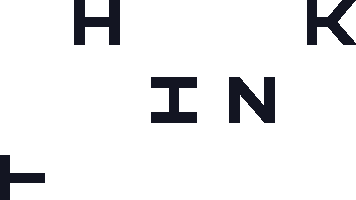

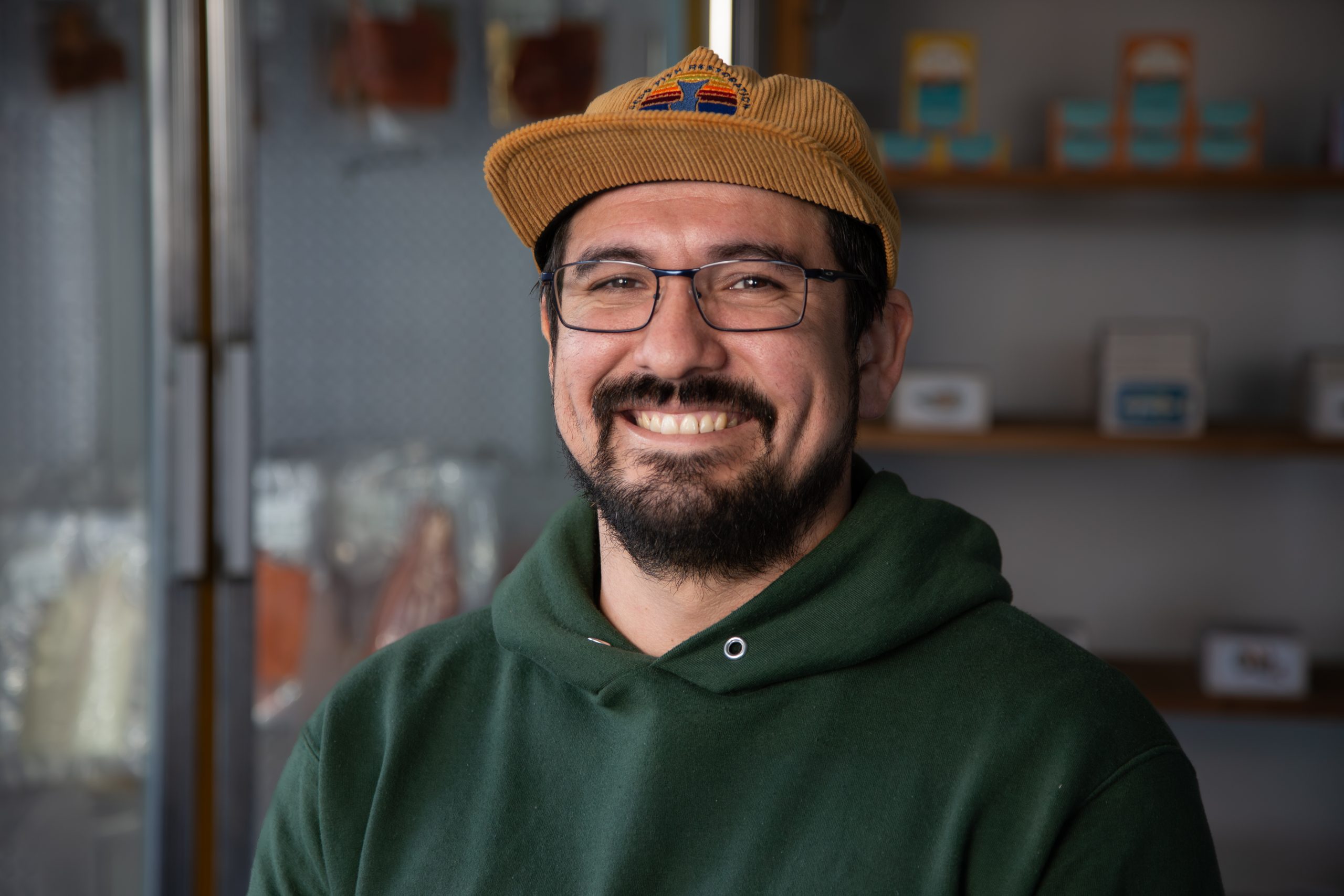
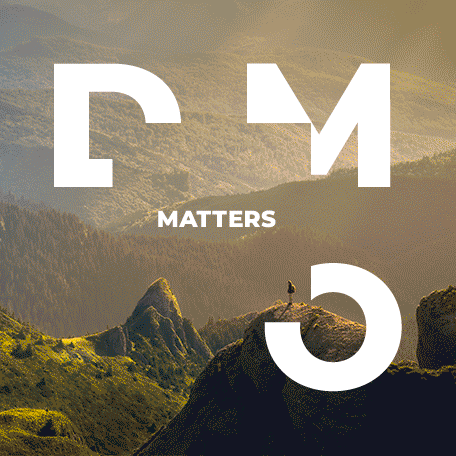

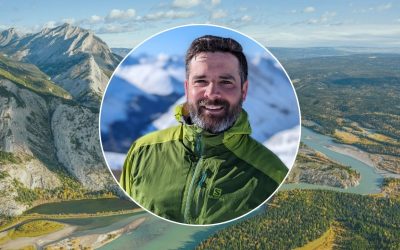
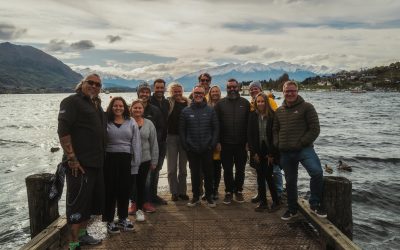
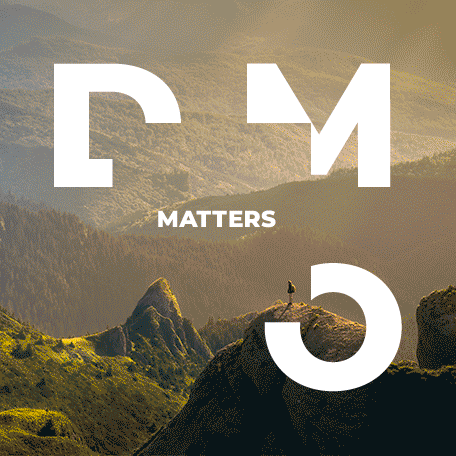

0 Comments